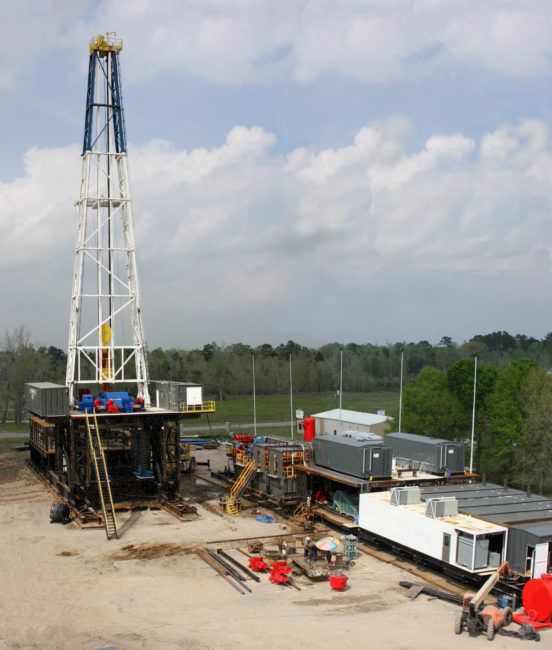
The state agency that oversees oil and gas drilling held a hearing Thursday, Dec. 15 on whether more public input is needed when a company wants to start hydraulic fracturing in Alaska. Environmental groups say this would allow more transparency, while the industry argues there are already enough rules to make sure hydraulic fracturing is safe. It’s up to the Alaska Oil and Gas Conservation Commission (AOGCC) to decide who is right.
Hydraulic fracturing — or fracking — is so controversial, there’s even disagreement over how it should be spelled:
“Thanks to the applicant and thanks to you for not spelling ‘frac’ with a ‘k,’” John Hendrix, oil and gas advisor to Governor Bill Walker, said while testifying at the hearing.
Hydraulic fracturing is when companies pump a high-pressure mix of water, sand and chemicals deep underground to more easily recover oil and gas.
This week the U.S. Environmental Protection Agency released a report concluding that operations using hydraulic fracturing “can impact drinking water resources under some circumstances.” National industry groups blasted the EPA’s report saying the technique is largely safe and that the report “distorts the science.”
The Alaska hearing showed the debate is just as contentious as it is in the rest of the U.S.
Bob Shavelson leads Cook Inletkeeper, the organization asking the commission to allow public comment when a company wants to frack a well. After the hearing, Shavelson said it’s all about transparency.
“I think it’s just basic good governance for Alaskans to have the ability to look at a permit, to read it, to try to understand it and to submit a comment,” Shavelson said. “I don’t see the big cost or burden or delay that comes with that.”
Josh Kindred, environmental council for the Alaska Oil and Gas Association, disagreed. He said the proposed change “is really just delaying for the sake of delaying.”
“And it’s being used to frustrate oil and gas development in Alaska,” Kindred said. “And those protections to the public are already there in the regulations that are currently in place.”
The oil and gas industry said the commission already enacted stricter hydraulic fracturing regulations in 2014.
BlueCrest Energy is pursuing a fracking operation in Cook Inlet off the Southern Kenai Peninsula, and their operations could be affected by the change.
John Martinek of BlueCrest agreed with Kindred in his testimony to the commission.
“Hydraulic fracturing is highly regulated by stringent regulations developed by AOGCC,” Martinek said. “And I might add they’re some of the most stringent regulations in the United States.”
Kenai Peninsula residents testified at the hearing. Many were worried about how BlueCrest’s activity will affect the environment around their community. Ninilchik resident Mike Schuster called in to the hearing. He supports more public comment when a company like BlueCrest asks the commission to use hydraulic fracturing.
“It does provide the opportunity for the public to be reassured that our commission that [is] reviewing permit applications [is] hearing us and giving us the opportunity to interact and affect interpretation of the policy that supports our interests,” Schuster said.
AOGCC is expected to decide on the proposed change by late January.
Elizabeth Harball is a reporter with Alaska's Energy Desk, covering Alaska’s oil and gas industry and environmental policy. She is a contributor to the Energy Desk’s Midnight Oil podcast series. Before moving to Alaska in 2016, Harball worked at E&E News in Washington, D.C., where she covered federal and state climate change policy. Originally from Kalispell, Montana, Harball is a graduate of Columbia University Graduate School of Journalism.




